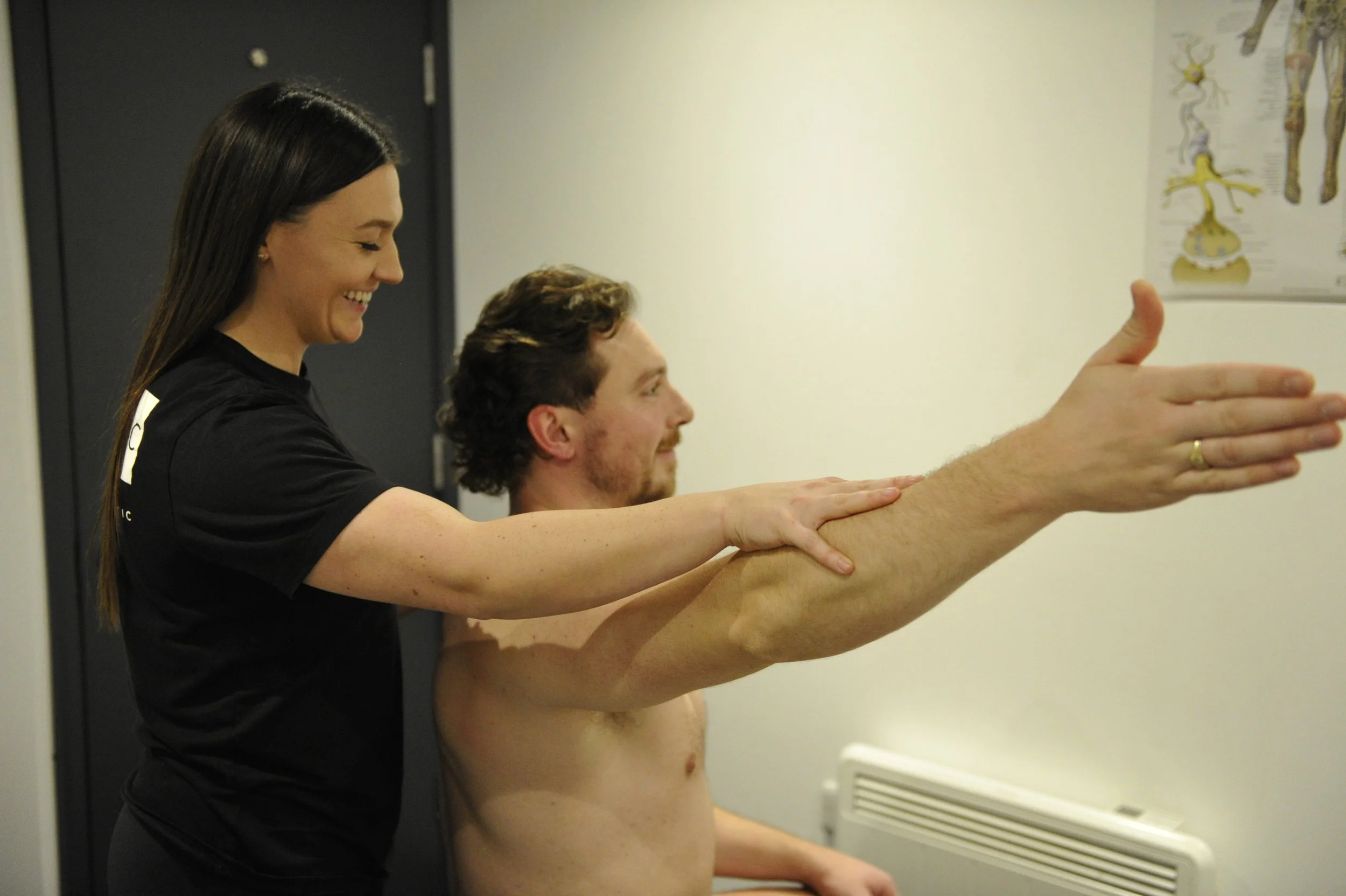How do we help?
From professional athletes aiming for competitive excellence to office workers managing persistent desk-related discomfort, we create tailored pathways to wellbeing that nurture both body and mind, enabling you to move through life with greater ease and confidence.
At Osgood Movement, you're never just another client; you're a valued partner in your wellness journey, empowered with the knowledge and support to achieve sustainable changes in how you move and feel.
Treatment Types
-
Chiropractic treatment is a specialised healthcare approach that focuses on diagnosing and managing mechanical disorders of the musculoskeletal system, particularly the spine.
The primary method involves manual manipulation, known as spinal adjustments, which aim to correct restrictions or dysfunctions in the spine and joints. These issues can disrupt the nervous system, resulting in pain, reduced mobility, and various health complications. Chiropractic care is commonly utilised for conditions such as back pain, neck pain, headaches, and musculoskeletal injuries.
In addition to spinal adjustments, a variety of supportive treatments, including soft tissue therapy, rehabilitative exercises, and lifestyle counselling, are employed to promote overall health and healing. -
Sports massage is a specialised therapeutic technique designed to assist athletes and active individuals in preventing injuries, aiding recovery, and enhancing performance.
This approach focuses on manipulating muscles, tendons, and soft tissues to improve flexibility, reduce muscle tension, and enhance circulation. Techniques employed in sports massage may include deep tissue manipulation, stretching, trigger point therapy, and myofascial release, all tailored to the individual's specific needs and activity levels.
-
Dry needling is a therapeutic technique utilised to address musculoskeletal pain, particularly muscle tightness and trigger points.
This procedure involves the insertion of thin, solid needles into specific areas of muscle or soft tissue without the introduction of any substances, hence the term "dry."
The primary objective of dry needling is to relieve muscle tension, enhance blood circulation, and facilitate healing in areas of tightness or discomfort, specifically targeting localised bands of muscle fibers known as "trigger points" that can cause pain.
-
Instrument Assisted Soft Tissue Manipulation (IASTM) is a therapeutic technique that employs specialised instruments to assess and treat soft tissue injuries or dysfunctions. These instruments, typically made from stainless steel or similar materials, apply controlled pressure and scraping movements to the skin and underlying tissues, including muscles, tendons, and fascia.
The primary objective of IASTM is to break down scar tissue, adhesions, and fascial restrictions that may cause pain, stiffness, and limited range of motion. This technique enhances blood circulation to the affected areas, promotes tissue healing, and improves mobility by relieving tightness in muscles and connective tissues.
-
Cupping is a therapeutic technique that involves the application of specialised cups to the skin to create a vacuum or suction effect. This vacuum draws the skin and underlying tissues into the cup, which is believed to facilitate blood flow, relieve muscle tension, and enhance circulation in the affected area. Cupping is thought to be effective for various conditions, including muscle pain, tension, inflammation, back pain, headaches, and respiratory issues.
While this practice is rooted in traditional Chinese medicine, it has also gained significant popularity in Western cultures, particularly among athletes seeking recovery and pain management solutions. Following treatment, patients may notice circular, painless marks on the skin at the sites of cup application; these marks typically remain for a duration of 7 to 10 days, depending on the intensity of the suction applied.
-
A movement assessment includes looking at individual joints, as well as the body as a whole, and how well they move through multiple planes of motion.
We look specifically at mobility, stability and motor control of each joint individually, and then put together whole body movements to see where and why the injury, pain, or incorrect movement pattern may be coming from.
A tailored rehab plan is then created to correct these ‘sub-optimal’ movement patterns by providing a better training stimulus.
Client Testimonials







